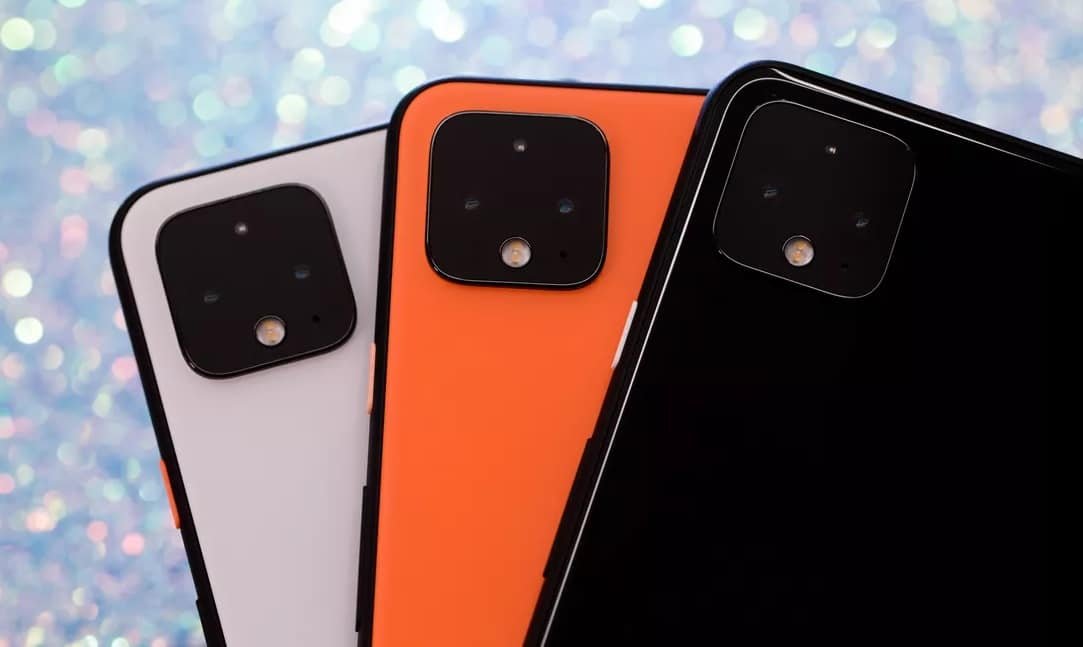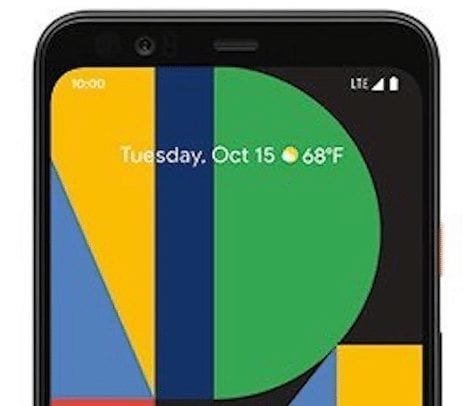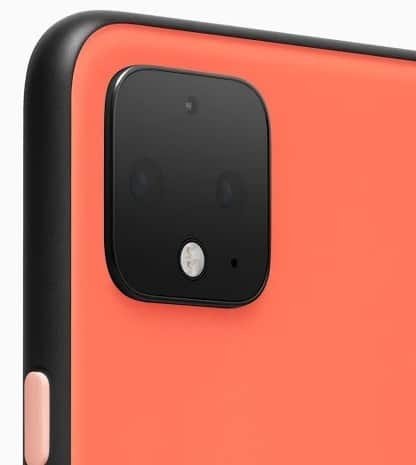Google has launched two new smartphones this year, the Google Pixel 4 and the Google Pixel 4 XL, which are identical except for their screen sizes (5.7″ versus 6.3″) and, obviously, battery capacities.
Thanks to Google’s courtesy, I have had the opportunity to thoroughly test the Pixel 4, and here I bring you my in-depth analysis.
Google Pixel 4: Everything you need to know
Google Pixel 4 features a design that, in my opinion, is not particularly captivating, as it has a large top frame. The reason for this large frame is the presence of a front camera, a 3D camera for facial recognition and a Soli radar to recognize gestures in the air.
The lower frame is narrower, but even with everything, it is somewhat thicker than other smartphones. The screen is completely flat, so the side frames are visible.
As a result, we are faced with a smartphone that has a lower screen-to-body ratio than other high-end smartphones, around 80 percent.
If you look at the back, the Google Pixel 4 has a glass finish with a large square camera module in one corner. This module appears large enough to house only two cameras and, when the phone is resting on a table, dances lightly when pressed on the screen.
The glossy finish on the back makes the footprints stand out with ease, although they are not too visible. The Pixel 4 is also available in black, white, and orange finishes.

Google Pixel 4 arrives with a 5.7-inch OLED panel featuring a 19:9 ratio, Full HD+ resolution, and support for HDR playback. One of its most outstanding features is its 90 Hz refresh rate, which makes scrolling look smoother, although it is not available in all apps and situations.
The screen covers 100% of the broad DCI-P3 range, commonly used in the film industry, and Google has incorporated a color mode that almost perfectly reflects the sRGB range, allowing you to view content as it was intended.
The maximum brightness of the screen is quite limited (445 nits), especially when compared to smartphones such as the iPhone 11 Pro and the Samsung Galaxy Note 10+, which exceed 700 nits. The viewing angles are wide, and the screen does not show a color tint when viewed from an angle.
Google offers the features Always Active Screen, which permanently displays useful information on the screen; Ambient EQ, which adjusts the color temperature to match the ambient lighting (similar to True Tone on the iPhone); and Night Light, which reduces the emission of blue light.
Focusing on performance, the Google Pixel 4 arrives with a Snapdragon 855 processor, the fastest available from Qualcomm today, and 6 GB of LPDDR4x RAM.
Although other high-end smartphones incorporate more RAM, this is not a problem, as it is more than sufficient.
In everyday life, the Google Pixel 4 moves with excellent fluidity. Applications open quickly, the interface moves with smooth animations, and even demanding 3D games, such as Asphalt 9, PUBG, or Fortnite, unfold at high FPS rates without any problems.
Google Pixel 4 arrives with 64 or 128 GB of internal storage, which has been formatted as F2FS (instead of EXT4) and offers very fast read/write times.
Google has not included the possibility of expanding it using a micro-SD card, so my advice is to opt for the 128 GB version if you plan to take many pictures and videos, especially considering that Google no longer offers unlimited storage in original quality in Google Photos.
The new facial recognition system works well and can unlock the phone quickly and reliably, even in low-light situations or when wearing glasses.
Since it uses 3D recognition, it is not possible to easily fool you with a photo or video, although, surprisingly, it allows unlocking with your eyes closed. On the other hand, most third-party apps (for example, banks) still do not recognize this system, and it is necessary to enter the PIN or password.

Google has incorporated a Soli radar into the Pixel 4, allowing you to identify when you approach the phone to prepare for facial recognition and recognize gestures in the air to interact with the phone without touching it.
This functionality, called Motion Sense, allows you to discard calls, silence alarms, and pass songs when playing music by moving your hand in front of the phone. In my opinion, Motion Sense is more of a curiosity than something beneficial, and also, for now, Google is not going to open it to developers.
Google Pixel 4 features a 2,800 mAh battery, offering fairly good autonomy compared to other smartphones. Today, you can reach the end of the day with some battery remaining, but if you use it intensively, you will have to charge at some point during the day.
Google Pixel 4 features fast charging of 18W through the USB-PD 2.0 standard, capable of recharging 50% in half an hour. Additionally, Google has incorporated fast wireless charging at 15W.
As expected, we found Android 10 at the factory, the latest version of Google’s operating system. An advantage of being a Pixel phone is that you will receive updates from older versions of Android for at least three years.
Android 10 introduces several notable visual changes, including the Dark Theme, which affects the interface and adapts apps accordingly. Since the screen is OLED, this mode also helps save battery since black pixels do not consume power on these panels.
Android 10 offers a gesture control system that, in my opinion, is not as comfortable as that of the iPhone and other manufacturers, as the gesture to go to the home screen is sometimes confused with the gesture to show open apps.
Another novelty is an updated Smart Response function that suggests actions based on notifications.
Google Pixel 4 features a new Subtitles functionality that displays real-time voice-to-text transcription in any app.
This technology is the same that, in the new Recorder app, allows you to convert voice recordings to text and search for fragments of the recording.
Google continues to incorporate Active Edge that allows you to open Google Assistant by squeezing the side frames tightly, as well as silencing the phone when you receive a call or an alarm sounds. Unfortunately, Google does not allow you to customize the app that opens when you tighten the frames or configure actions within an app.
In the multimedia aspect, it is worth noting the presence of stereo speakers, although the second speaker is not on the front next to the USB-C connector. Google doesn’t include a 3.5mm headphone jack, a USB-C adapter, or headphones.
One of the aspects that Google cares most about in Pixels is the camera. The Google Pixel 4 features a dual rear camera setup, consisting of a 12MP primary camera with an f/1.7 aperture and a 16MP telephoto camera (approximately 1.8x) with an f/2.2 aperture.

This configuration lags behind other high-end smartphones that also feature an ultra-wide-angle camera. Given the good results of the high-resolution zoom by Pixel 3 software, I would not have minded seeing an ultra-wide-angle camera instead of the telephoto camera.
The primary camera is capable of taking excellent photographs. However, its results are not as good as those achieved by certain high-end smartphones, such as the iPhone 11 Pro or the Huawei Mate 30 Pro, in challenging low-light situations.
As for the telephoto camera, it offers a 1.8x magnification, allowing us to get closer to the details. Thanks to the high-resolution zoom processing software, the results are good even when we zoom in.
The Portrait mode has been improved, thanks to the additional information provided by the second camera and is now able to better separate the subject from the background of the image. It is possible to modify the degree of blur afterward, but Google does not offer studio lighting modes.
Like the Pixel 3, Google offers a Better Shot mode that captures photographs before and after pressing the shutter button, and suggests a better shot if the one you’ve captured presents an issue. Now it is also able to identify the people who stand out most in our photos, allowing us to choose the shot in which they appear smiling, with their eyes open, etc.
The Night Vision mode has also been improved and is now capable of capturing astrophotography shots, that is, long-exposure sky shots that compensate for the movement of the stars.
The front camera of the Pixel 4 features an 8 MP sensor with an f/2.0 aperture and a 90º wide-angle lens. This camera also features a synthetic flash that illuminates the screen to add extra light and capture better selfies in low-light conditions. The results obtained with this camera are good.

When recording video, the Google Pixel 4 can capture stereo sound and provides excellent stabilization results with both the rear and front cameras. However, the Pixel 4 camera cannot record 4K video at 60 FPS, which is a limitation compared to other high-end smartphones.
Google Pixel 4 is available for $777.00 for the 64GB version and $899.00 for the 128GB variant. This is a tighter price than other high-end smartphones.
In conclusion, the Google Pixel 4 is an excellent option for those seeking an original Android experience with quick updates and a reliable camera. Still, it presents some limitations compared to other high-end smartphones in certain areas.
